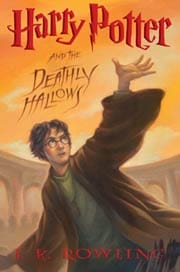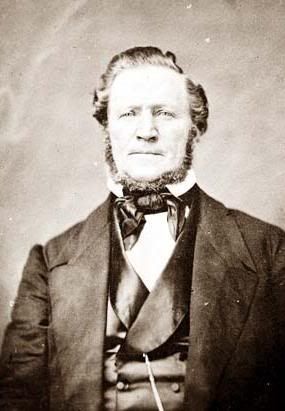I finally have internet access again (!)and
Snarker be damned, I am going to post my little heart out about how wonderful and spiritual it was. I believe that the types of talks and panels at Sunstone have the power to touch the questioning and questing among us in a way that speaks to our souls.
On Thursday, the Mormon Women's Forum presented a panel titled "Image and Reality: The Many Faces of Mormon Women. Janice Allred led the panel and explained that the concept of face invites us to consider several contrasting pairs that define face: appearance vs. reality, public vs. private, open vs. hidden, engaged vs. withdrawn, present vs. past, and ideal vs. real. Each of the panelists addressed how Mormon women negotiate the tension between the ideal and the reality of their own lives. Since I was one of the panelists, I'll post my remarks here for your edification!

Virginia Woolf wrote: "a woman must have money and a room of her own if she is to write fiction." I identify with this statement because I realize that in order to accomplish great things, one must have the means and the space. I sometimes wonder if, within Mormonism, a woman can find "a room of her own." From the time a Latter-day Saint girl or boy is very young, words of testimony are whispered in their ears. They memorize all 12 Articles of Faith and are taught songs of faith and assurance. The Young Women stand each week and recite a motto describing the ideal girl. An active teenage girl who attends Church services, Mutual, and Seminary goes to Church 10 or more hours a week. She is interviewed by her Bishop twice a year to assess her worthiness. Often, this young woman will marry at a fairly young age and begin Church and family responsibilities before she has ever really lived on her own.
These can all be wonderful influences. They tend to produce women who have lived clean, decent lives; who have not mired themselves in addictions. These women are trained and prepared to keep clean and organized homes and to raise upstanding families. Are they missing anything from never having had a room of their own?
I think our strength as a culture is that we tend to develop the public face of our people superbly. As a young wife, I had learned how to present that face to the ward and to the world. I was well-spoken, well-groomed, energetic. I had the skills to run a Parent-Teacher Organization or to speak in public. This picture shows 6 of my eventually 8 children. As you can see, I sewed matching dresses for these girls. I did it three times a year: Christmas, Easter, and Pioneer Day.
But the public appearance was very different from the private reality.
At times I found friends I could share the tough realities of my life with. But in my experience, the Mormon world was not conducive to such confidences. As a Latter-day Saint, I felt compelled to put on a good face for the world. To my non-member friends and neighbors, I felt that I needed to show them how happy being a member of the Church made me. I couldn’t reveal any marital problems, for that would put a bad light on our “eternal family” rhetoric. I didn’t feel free to complain about the pressures of having 8 children, because it might invalidate my reasons for having such a huge family. Among the other LDS women, I felt some competition and equal pressure to maintain the image of perfection. Especially when I was a young mother, I didn’t realize that other Mormon women might also be struggling.
Putting forth a good face is also an inherited trait in my family. To illustrate this, I’d like to share a story my mother wrote in her family history. She tells of going to see a Broadway musical review with her sisters. Since they knew someone in the production, they were invited to go backstage. They left their seats during the final number and were ushered back behind the curtains to watch the chorus line finale. They saw the dancers with big, bright smiles upon their faces while they faced the audience. But when they turned their backs on the crowd, the girls’ faces would relax into a frown or a scowl of concentration. By the time they turned back around, they had their smiles pasted back on. My mother compared this chorus line to her family. She said that in public, they always had to have their smiles on.
I wrote a poem (some of my blog readers will remember this!) which expresses the liminality I have felt as I have attempted to please my family, my Church, and especially my husband without being able to fully celebrate the nontraditional parts of myself. It’s called, “I Put on Black.”
I put on black,
My head I bow.
You like me now.
You like me now.
I put away my chartreuse scarf,
And colored things I used to wear.
My second piercings now are bare,
I gel down my unruly hair.
I do not have a lot to say.
My makeup now is quite subdued.
I seem to cook a lot of food,
I don’t go swimming in the nude.
I nod and murmur when I should,
I shut my mouth, my thoughts I still,
My questions and my quirks I kill--
My secret longings none can fill.
The ward is suddenly so kind.
I’m not as different now, you see!
A call has been extended me
To teach Relief Society.
Sedately I walk down the aisle,
The Bishop’s wife sits by my side,
She nods at me; you smile with pride,
I feel a tearing deep inside.
I clean the toilets and the hall,
Read stories to my sweet sunbeams.
We never argue now, it seems.
I wonder where I put my dreams.
Your temple marriage now is safe,
You hold my hand that wears the ring.
I never dance, I never sing,
You would not notice such a thing.
I’m all in black,
I’ve kept my vow,
You like me now,
You like me now.
But this is what
You do not see:
I don’t like me,
I don’t like me.
When my family moved to the small, provincial town of Vernal, Utah two years ago, I discovered blogging. I felt I had found “A room of my own,” where I could present my innermost thoughts and feelings, ideas I’ve long held, but didn’t always align with the perfect Mormon woman. On my blog, I call myself “Bored in Vernal,” a feminist, pacifist, disgruntled, yet fully active Latter-day Saint. I’ve found the cyberworld to be a place where I can explore the real me among those with a Mormon background. I’ve found that I can’t leave the Church behind. It is a deep and inextricable part of me. Yet there are some policies, procedures and doctrines that, in order to be authentic, I must take exception to. Even at the ripe old age of 47, I’m still trying to find myself. Right now, it’s almost like I live a double life. I find myself saying things at Church, then saying the polar opposite on my blog. Which do I really believe? At the time I say these things, I feel I am representing myself accurately. I’m so confused. What are my true feelings? Who am I?
One of the objectives of this panel was to explore how Mormon women negotiate the tension between the roles and expectations of Mormon culture and the reality of their own lives. I pondered this as I read a recent novel entitled “Snow Flower and the Secret Fan.” The book is about nineteenth-century China and a group of women in Jiangyong, a far flung area in the rural countryside. These traditional Chinese females experienced the binding of the feet at age 7, early marriage, and a secluded life thereafter. While embracing the expectations of their culture, the women of this community developed practices which enabled them to survive. To meet their needs for community, the women contracted with other females—either “sworn sisters” or “old sames.” The novel is based on factual evidence that these women developed a secret system of writing by which they could communicate. It was called “nu shu,” and was kept secret for over a thousand years.
I believe that women such as myself who find tension between traditional Mormon roles and their own personal paradigms must find some way to relieve the strain. What practices will they develop which will enable them to survive and flourish? Will it be online communities such as blogging, or email groups? As wards become more accepting of diversity, will they find kindred spirits within the ward with whom they can commiserate? Or will these women find fulfillment in jobs outside the home, retaining their cultural roles only while at home and at Church?
Through the Proclamation on the Family, the Church has shown its commitment to traditional roles for women. Within our illustrious history, though, there have been some few opportunities for women, even within this type of culture, to find “a room of their own.” I’m thinking of women such as Ellis Shipp, who was sent back East by Brigham Young to obtain a medical degree. She practiced and taught medicine in Utah while bearing ten children. Women like Minerva Teichert, who went to Chicago to take art lessons as a “set apart” missionary of the LDS church. She married, raised a family, cooked and helped with the ranch while painting prolifically throughout her life. I’m thinking of Relief Society sisters who collected grain for humanitarian service, wrote their own manuals, maintained their own budgets and buildings. I urge that we continue to draw upon these, and many other examples of women who embraced their cultural roles within Mormonism yet broadened the definition of womanhood to find a room of their own from which to reach out and touch the world.
Stay tuned! I'll be posting much more of my experiences from Sunstone.
Labels: conferences, spirituality, Sunstone, women's issues
 While you're waiting to hear from me, I thought I'd post a book review on the last book I read while in the States: March, by Geraldine Brooks. This is a great book for the light novel reader--not too difficult to read, but with some substance to it. Brooks has drawn her inspiration from Louisa May Alcott's Little Women, and has written the story of the absent father, Mr. March, who has gone off to aid the Union cause in the Civil War. She has loosely based this character on Louisa Alcott's own father, Bronson Alcott.
While you're waiting to hear from me, I thought I'd post a book review on the last book I read while in the States: March, by Geraldine Brooks. This is a great book for the light novel reader--not too difficult to read, but with some substance to it. Brooks has drawn her inspiration from Louisa May Alcott's Little Women, and has written the story of the absent father, Mr. March, who has gone off to aid the Union cause in the Civil War. She has loosely based this character on Louisa Alcott's own father, Bronson Alcott. 

























